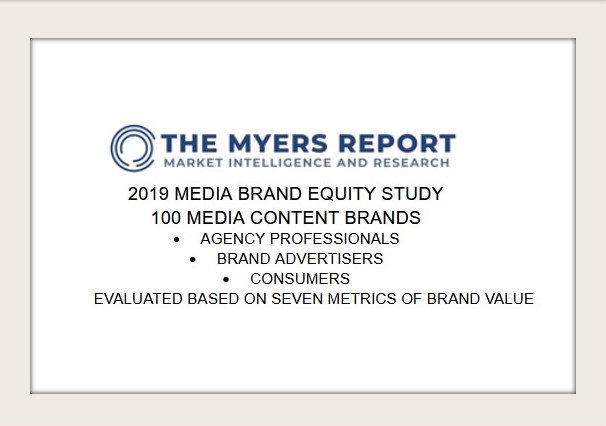Uncovering Hidden Asset Value at A+E Networks

Buying, selling, and planning algorithms may lead to smarter and more efficient media, but they often ignore ROI value and effectiveness. Brand equity research informs the marketing of nearly every B2C and B2B category except one: media, of course. As the leader in measuring media brand equity, The Myers Report is on a mission to elevate the importance of educating both buyers and sellers on undervalued (and overvalued) media brand attributes. This often takes me down wormholes of data, searching for relevant insights. But, when discovered, these insights can be game-changing. Consider A+E Networks — home of A&E, HISTORY, and Lifetime. It may not be a surprise that viewers express far more brand love toward those networks than advertising professionals do and that much of the disconnect is driven by ageism. What is less obvious is just how destructive that differential is to the industry.
The challenge for A&E Network's management, and for virtually every major TV network company, is to convince a professional advertising community that Hubbell is right. Personally, I find it both unreasonable and uninformed to retain decades-old and outdated mantras about ageism in media buying. The over-weighting of 55+ TV viewers is used to justify packaging "free" 55+ impressions by assigning artificially younger demo parameters that often do not reflect actual targets. But, under any excuse or any "buying" tactic, ageism, by any other name, is ageism. It is biased. It is validating a lie. It is antithetical to what we should stand for as an industry. It is wrong.
In his weekly MediaVillage column, Hubbell provides education on the role of ageism in advertising and media, and offers practical solutions, confronting industry realities. Solutions are easy, though. A simple one is to replace tactically dishonest target demos with audience reach goals that accurately reflect a brand's true priority consumers. The availability of addressable households, defined by first-party purchase data, leads to that ultimate goal. Inertia and a failure to adjust to changing realities are the industry's only excuse for resistance. "The Myers Report Media Brand Equity Study" uncovers the practical implications, which several TV network companies will recognize.
Across seven The Myers Report metrics of brand equity — including distinctiveness, cultural relevance, interest in content, emotional connection with audiences, and brand love — A+E Networks ranks first among 55+ consumers across 17 competitive network groups and media categories. Among 25–54 audiences, the family of A+E Networks ranks 4th. And among the 18–34 cohort, A+E Networks ranks 8th.
Clearly, the strength is among the 55+ viewer base, but that's where the bias against age kicks in. Among the more than 300 brand advertiser respondents to The Myers Report survey, A+E Networks ranks 8th, and 9th among agency media professionals. Those who allocate and invest media budgets align with the 18–34 cohort, which restricts the ability of A+E Networks to monetize its greatest strength: a strong and positive connection with its older audiences.
Similar age-based biases impact Discovery Communications, many broadcast networks, and most legacy media brands. It can't be all bad to reach an audience that is more likely to view live linear TV, watch commercials, remain loyal to networks and programs, and purchase a wide spectrum of advertised products and services beyond pharmaceuticals. It is bad for an industry to remain embedded in outdated and inappropriate behavior simply because "it's the way it has always been done."
Full details from "The Myers Report Media Brand Equity Study" are available to MediaVillage member companies. Contact a MediaVillage team leader: Mark Altschuler, E.B. Moss, John Bishop, or Jack Myers.


